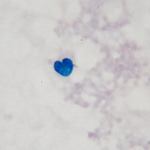 Before starting Atypical Mycobacteria Antibiotic Therapy (AMAT or Anti-MAP), it may be prudent to obtain a test for human paratuberculosis (commonly referred to as a cell-wall deficient form of Mycobacterium avium subspecies paratuberculosis or atypical, spheroplastic mycobacteria.)
Before starting Atypical Mycobacteria Antibiotic Therapy (AMAT or Anti-MAP), it may be prudent to obtain a test for human paratuberculosis (commonly referred to as a cell-wall deficient form of Mycobacterium avium subspecies paratuberculosis or atypical, spheroplastic mycobacteria.)
As a species, mycobacteria are notoriously difficult to culture (grow in a lab). The cell wall version of MAP, which is found in animals, has been successfully cultured and veterinarians have multiple tests they use to identify MAP. However, there are very few labs in the world where the cell wall deficient (spheroplastic or atypical) version of MAP that is found in humans can be accurately cultured.
Otakaro Pathways
 One lab that has developed an innovative diagnostic test for a cell-wall deficient mycobacteria found in Crohn’s disease patients, which includes human MAP, is John Aitken’s lab in New Zealand. In conjunction with Otakaro Pathways, Mr. Aitken’s lab has provided hundreds of patients with detailed results of their cell-wall deficient mycobacterial cultures. These results can be taken to a local physician, infectious disease specialist or gastroenterologist and utilized to develop an individual treatment pathway. The current cost for this test is $250 USD and requires two vials of blood be sent to the laboratory. Please see the Otakaro Pathway site for more information on how to obtain a culture through Mr. Aitken’s lab.
One lab that has developed an innovative diagnostic test for a cell-wall deficient mycobacteria found in Crohn’s disease patients, which includes human MAP, is John Aitken’s lab in New Zealand. In conjunction with Otakaro Pathways, Mr. Aitken’s lab has provided hundreds of patients with detailed results of their cell-wall deficient mycobacterial cultures. These results can be taken to a local physician, infectious disease specialist or gastroenterologist and utilized to develop an individual treatment pathway. The current cost for this test is $250 USD and requires two vials of blood be sent to the laboratory. Please see the Otakaro Pathway site for more information on how to obtain a culture through Mr. Aitken’s lab.
Prof. John Hermon-Taylor
Prof. John Hermon-Taylor of the Crohn’s MAP Vaccine group in England is developing a diagnostic test for MAP, although this test is not yet available to the public. The MAP Vaccine began Stage I trials in January 2017. To learn more about Prof. Hermon-Taylor’s MAP test, see Dr. Amy Hermon-Taylor’s symposium video.
PCR Testing of MAP
 Many researchers identify MAP in humans by using PCR DNA identification, since culture has proven difficult. One well known researcher who has developed and published a nested PCR assay to detect the presence of MAP in clinical samples is Dr. Saleh A. Naser. The most well known DNA target for MAP is IS900. F57 is another MAP specific DNA target. This methodology for MAP detection can be replicated by any lab willing to do so. For more information on Dr. Naser’s work and publications, see the University of Central Florida site.
Many researchers identify MAP in humans by using PCR DNA identification, since culture has proven difficult. One well known researcher who has developed and published a nested PCR assay to detect the presence of MAP in clinical samples is Dr. Saleh A. Naser. The most well known DNA target for MAP is IS900. F57 is another MAP specific DNA target. This methodology for MAP detection can be replicated by any lab willing to do so. For more information on Dr. Naser’s work and publications, see the University of Central Florida site.
Ongoing Research
Because a validated human MAP test is critical to all future research in this area, the Human Para community has sponsored a landmark MAP/Crohn’s Testing Study which is nearing completion. 201 Crohn’s and control participants donated blood samples, which were then blinded and tested for MAP at 6 different laboratories. This study will compare the testing methods side by side to assess the benefits and drawbacks of each. Whole genome sequencing is being conducted on 40 mycobacterial isolates, published results are anticipated in the Spring of 2020. Read our recent update for additional information and methodology.
